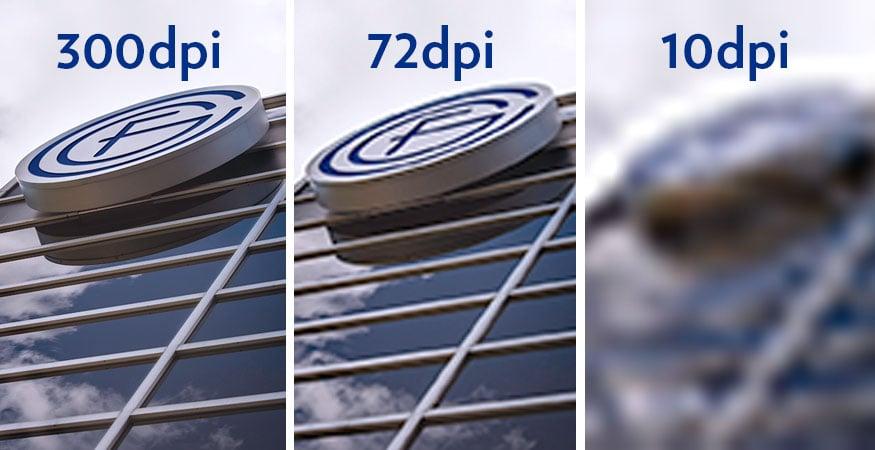This is the first of a four-part series on Color Management techniques. Watch for future articles on this and other technology topics in your inbox by subscribing to our blog.
Color consistency, color accuracy and repeatable color is often the most important task in today’s printing industry. Whether you’re at a small print shop with digital printers or a large print house with giant presses, the goal is to be able to print consistent repeatable color prints to maintain brand standards and produce the quality customers expect.
Unfortunately, nothing is as simple as clicking on the “print” button. Even if you have two identical printing devices, the same file can often print with differing results. Each device seems to have a mind of its own and can often interpret the same files differently based on how it’s configured. Fortunately, there is an answer to that — Color Management.
Having a Color Management Workflow in place can bring the tedious task of color printing into a manageable and repeatable process. With Color Management, a file printed today will look the same when printed a month from now because good Color Management maintains the devices’ ability to print colors in a repeatable way.
Step One: Admit You Have a Problem
The first step in moving to a Color Management workflow is to consider what you’re printing and what kind of results you want. Ask yourself these questions:
- Are you printing for a “pleasing color” output or are you in the “color critical” output arena?
- Are your jobs a mix of both?
- Do you print using spot colors?
- Do you have repeat print jobs that need to match each other?
- Do you need to print the same or very similar files on different types of paper substrates?
If you answered yes to any of the above questions, a Color Management workflow will help you. Basically, any print job will benefit by putting some form of color management in place.
Color Management expert, Neil Barstow of colourmanagement.net, put it this way:
“Ideal working practice requires an automatic way of describing the capabilities of each digital device and a mechanism to compensate for the performance of each. With the right settings, the color management system fulfills this need by using each device's ICC profile and its ability to unequivocally and accurately describe device capabilities. The color management system can now properly translate digital data between devices using those ICC profiles in order to maintain appearance, within limits of device capability, of course.”
Today, we use many different devices to capture the very world around us, and we want to print those images on paper and have it perfectly match the original.
Additionally, we use software to create or enhance images like never before, and artists use a stylus, mouse and PC monitor instead of paint brushes and a blank canvas to create their works of art. Once those images have been created, they want to faithfully reproduce them on paper.
The Human Eye is the Enemy
That’s where the problems start. Trying to get all the different combinations of inputs, monitors and output devices to all match each other and keep the content in an accurate reproducible state is almost impossible. In some cases, it’s impossible because each device has a different range or gamut of colors that it can either take in or give out.
Cameras, scanners and computer monitors all live in the RGB color world. Printers live in either the RGB or CMYK color world, and all of them have a unique color gamut they can reproduce.
The human eye has the largest color gamut of all, and the range of colors that the human eye is capable of seeing how the standard is derived — known as the Standard Observer.
I’m going to get a little technical on you here, so stay with me. The CIE 1931 color spaces were the first defined quantitative links between distributions of wavelengths in the electromagnetic visible spectrum, and physiologically perceived colors in human color vision. The mathematical relationships that define these color spaces are essential tools for Color Management, and are important when dealing with color inks, illuminated displays, and recording devices such as digital cameras.
The CIE 1931 RGB color space and CIE 1931 XYZ color space were created by the International Commission on Illumination (CIE) in 1931. They resulted from a series of experiments done in the late 1920s by William David Wright and John Guild. The experimental results were combined into the specification of the CIE RGB color space, from which the CIE XYZ color space was derived.
Closing the Gap
Color Management implements workflows that automate ways of describing the capabilities of each digital device and the mechanisms to compensate for the performance of each. To do this, we use good profiles of each device and maintain those profiles throughout the workflow.
To be clear, there isn’t just one workflow, and a print shop may have many different workflows in place depending on the clientele it works with.
Many print shops don’t have the means to control what types of documents their customers provide for printing, and often they don’t know what color space the document was created in or what the rendering intents are. But this won’t stop the print shop from having a generic Color Management workflow in place for those jobs to maintain a repeatable color output.
What all print shops do have is the output devices they print to, and those can be color managed to be in a consistent and repeatable print state.
While each device is unique, every device can be color managed. To color manage a device, we once again turn to the use of profiling. We can profile to a known standard and maintain the printing device in a repeatable printing state.
There are many ways to set up a Color Management workflow, and knowing how to keep your printing devices at the highest level of readiness may require some help. Having a color expert available is the best way to start down the Color Management path.
Having a color expert assist in developing your final workflow gives you confidence in knowing that you can achieve a repeatable and consistent color output.
The Troyka-TC is the largest independent Canon dealer in the nation, and we’d love to show you how our print experts can ease the burdens of worrying about color control in even the most demanding print environments. Reach out to us today for a no-cost, no-obligation assessment of your print production needs.








